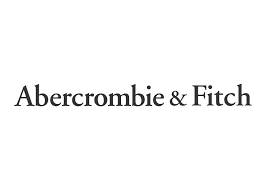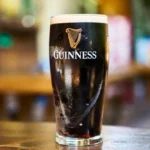
Welcome to our exploration of Abercrombie & Fitch, a brand that has woven itself into the fabric of American fashion and culture. Established in 1892, Abercrombie & Fitch has evolved from a humble sporting goods store to a global retail powerhouse known for its casual luxury and youthful spirit. In this blog post, we’ll delve into 25 fascinating facts about Abercrombie & Fitch, uncovering the history, controversies, and unique marketing strategies that have shaped its identity over the years. Whether you’re a longtime fan or simply curious about the brand, you’re sure to discover something intriguing in the world of Abercrombie & Fitch. Let’s dive in!
Founded in 1892 – Abercrombie & Fitch was established in Manhattan by David T. Abercrombie, who initially focused on outfitting elite outdoorsmen. The company catered to a niche market of affluent hunters and fishermen, providing high-quality gear that appealed to adventurous clientele. This original focus on outdoor sporting goods set the foundation for the brand’s identity as a purveyor of quality and adventure.
Ezra Fitch Joined in 1900 – In 1900, Ezra Fitch, a wealthy lawyer and devoted customer, partnered with Abercrombie to reshape the company’s direction. Fitch brought a new vision that expanded the brand’s offerings beyond just outdoor gear, incorporating fashion elements that appealed to a broader audience. This partnership marked a significant turning point, leading Abercrombie & Fitch to become a lifestyle brand rather than just a retailer of sporting goods.
Originally Focused on Sporting Goods – Abercrombie & Fitch initially specialized in selling fishing, hunting, and camping gear, attracting notable figures such as President Teddy Roosevelt and author Ernest Hemingway. The brand’s reputation for quality and expertise in outdoor equipment helped it gain traction among affluent customers who valued durability and performance in their gear. This focus on sporting goods established Abercrombie & Fitch as a trusted name in outdoor adventure.
Pioneered Mail-Order Catalogs – In 1909, Abercrombie & Fitch published a massive 456-page mail-order catalog, a groundbreaking move in the retail industry at the time. This catalog featured detailed descriptions and images of their products, allowing customers to shop from the comfort of their homes. The innovative approach to retail not only expanded their reach but also set a precedent for future catalog-based shopping experiences.
Bankruptcy in 1976 – Despite its early success, Abercrombie & Fitch faced financial struggles in the 1970s, culminating in bankruptcy in 1976. This marked the end of the company’s original form as it grappled with changing consumer preferences and increased competition. The bankruptcy was a pivotal moment that led to a reevaluation of the brand and its business model, paving the way for its eventual transformation into a fashion label.
Bought by The Limited in 1988 – In 1988, Abercrombie & Fitch was acquired by The Limited, a move that signaled a significant shift in the brand’s strategy. The new ownership aimed to reposition Abercrombie & Fitch as a trendy fashion label targeting teens and young adults. This transformation involved rebranding efforts that emphasized lifestyle and fashion, moving away from its roots in outdoor sporting goods.
Became Synonymous with Casual Luxury – Abercrombie & Fitch successfully introduced the concept of “casual luxury,” blending high-end casual wear with preppy and laid-back styles. The brand’s offerings appealed to young consumers seeking fashionable yet comfortable clothing. This new identity helped Abercrombie & Fitch carve out a niche in the competitive fashion market, positioning itself as a go-to label for aspirational casual wear.
Trademarked Its Signature Scent – The brand became well-known for its signature cologne, “Fierce,” which was often sprayed in stores to create a distinct shopping experience. This scent became as iconic as the clothing itself, contributing to the brand’s identity and atmosphere. The strategic use of fragrance helped enhance customer engagement, making shopping at Abercrombie & Fitch a sensory experience.
Stores Were Designed to Resemble Nightclubs – Abercrombie & Fitch stores were famously designed to mimic the atmosphere of nightclubs, featuring dim lighting, loud music, and strong fragrances. This unique shopping environment was intended to create an exclusive and trendy vibe that resonated with its target demographic. The nightclub aesthetic became a hallmark of the brand, attracting customers seeking a fashionable and immersive retail experience.
Logo-Centric Designs Ruled the 2000s – In the early 2000s, Abercrombie & Fitch’s moose logo and branded hoodies became dominant in teen fashion. The brand’s logo-centric designs were highly sought after, symbolizing status and belonging among young consumers. This focus on branding contributed to the brand’s popularity, making it a staple in the wardrobes of many teenagers during that era.
Criticized for Exclusionary Practices – Former CEO Mike Jeffries faced significant criticism for his exclusionary remarks, stating that Abercrombie & Fitch catered only to “cool, good-looking people.” This statement highlighted the brand’s narrow focus on a specific image, alienating many potential customers and drawing backlash from various communities. The controversy surrounding these practices prompted discussions about inclusivity and representation in fashion.
Lawsuits Over Hiring Discrimination – Abercrombie & Fitch faced multiple lawsuits alleging discriminatory hiring practices, where employees were reportedly selected based on their appearance rather than their qualifications or merit. These cases highlighted the brand’s controversial approach to staffing, which prioritized a certain aesthetic over diversity and inclusivity. The legal challenges brought attention to the ethical implications of such practices and fueled public criticism of the brand’s corporate culture.
Faced Backlash for T-Shirt Designs – The brand encountered significant backlash for certain graphic t-shirt designs that were deemed offensive or culturally insensitive. Some slogans and imagery used in their apparel sparked outrage, leading to public calls for accountability and changes in their product offerings. This backlash forced Abercrombie & Fitch to reevaluate its design choices and marketing strategies, as they aimed to align better with evolving social standards and consumer expectations.
Class-Action Lawsuit for Unpaid Work – Abercrombie & Fitch was the subject of a class-action lawsuit in which store employees claimed they were required to purchase the company’s clothing for work without reimbursement. This practice raised concerns about labor rights and employee treatment, drawing attention to the financial burden placed on workers. The lawsuit underscored the importance of fair labor practices and highlighted the need for companies to ensure that their policies are equitable and just.
Forced to Redefine Its Image – In response to the mounting criticism regarding its exclusionary practices and negative public perception, Abercrombie & Fitch was compelled to undertake a significant transformation in its marketing and leadership. The brand recognized the necessity of redefining its image to appeal to a broader audience and to foster a more inclusive environment. This shift involved changes in leadership, branding strategies, and the overall approach to customer engagement.
Launched the “Casual Luxury” Concept – Abercrombie & Fitch effectively launched the “casual luxury” concept, positioning casual wear as aspirational through high-end pricing and imagery. This marketing strategy aimed to elevate everyday clothing to a status symbol, appealing to consumers’ desires for both comfort and style. By promoting this concept, the brand successfully differentiated itself in the competitive fashion landscape and attracted a loyal customer base seeking fashionable yet relaxed attire.
Ads Were Known for Shirtless Models – The brand’s advertising campaigns became notorious for featuring shirtless male models, often showcasing sculpted torsos in black-and-white photography. These provocative campaigns were designed to capture attention and reinforce the brand’s image of desirability and exclusivity. While effective in generating buzz and attracting a youthful audience, the reliance on such imagery also drew criticism for perpetuating unrealistic body standards.
Controversial Shopping Bags – Abercrombie & Fitch’s shopping bags, which featured nearly nude models, sparked both attention and criticism from the public. The provocative designs were intended to create a bold brand statement, but they also raised concerns about objectification and the appropriateness of such imagery in retail marketing. The controversy surrounding these shopping bags highlighted the fine line between attention-grabbing marketing and social responsibility.
Popularity Peaked in the Mid-2000s – The mid-2000s marked the peak of Abercrombie & Fitch’s popularity, as it became the go-to label for teenagers seeking trendy clothing. Stores were often bustling with customers, particularly on weekends, as the brand’s image resonated with youth culture. This period of success was characterized by a strong brand presence and a loyal customer base, solidifying Abercrombie & Fitch’s position as a leading retailer in the teen fashion market.
Heavily Influenced Pop Culture – Abercrombie & Fitch’s impact on pop culture was significant, with the brand being referenced in songs, movies, and TV shows throughout the early 2000s. Its logo and clothing became symbols of youth culture and social status, further embedding the brand into the fabric of contemporary fashion. This cultural relevance contributed to the brand’s allure and helped maintain its popularity among young consumers.
Logo-Centric Fashion Went Out of Style – By the 2010s, the demand for minimal branding and subtle designs led to a decline in sales for Abercrombie & Fitch, as logo-centric fashion fell out of favor. Consumers began to favor understated styles over overt branding, prompting the brand to reassess its product offerings and marketing strategies. This shift in consumer preferences presented challenges for Abercrombie & Fitch as it navigated a rapidly changing fashion landscape.
CEO Mike Jeffries Resigned in 2014 – The resignation of CEO Mike Jeffries in 2014 marked a significant shift in Abercrombie & Fitch’s company culture and strategy. His departure was seen as a response to the growing criticism surrounding the brand’s exclusionary practices and outdated image. With new leadership, the company aimed to revitalize its brand identity and implement changes that would foster inclusivity and diversity in its marketing and product offerings. This transition was essential for the brand to reconnect with a broader audience and adapt to the evolving values of consumers.
Stores Changed Their Atmosphere – In a bid to redefine its image, Abercrombie & Fitch made notable changes to the atmosphere of its stores. The brand replaced the previously dim lighting and loud music with brighter lighting and a more subdued sound environment. This shift was part of a broader effort to create a more welcoming and inclusive shopping experience, moving away from the nightclub aesthetic that had characterized its stores for years. The changes aimed to attract a wider range of customers and foster a more comfortable shopping environment.
Expanded Inclusive Sizing – After years of criticism for its limited range of sizes, Abercrombie & Fitch began expanding its sizing options to include a more diverse range of body types. This move was a direct response to consumer demand for inclusivity in fashion and aimed to create a more welcoming brand image. By offering extended sizes, the company sought to ensure that all customers could find fashionable clothing that suited their needs, thereby promoting body positivity and acceptance within its brand ethos.
Marketing Shifted to Diversity and Authenticity – In recent years, Abercrombie & Fitch has shifted its marketing strategies to emphasize diversity and authenticity. The brand began featuring a wider range of models in its advertising campaigns, moving away from the exclusivity of its past. This change was aimed at reflecting the diverse society in which consumers live, helping to foster a more relatable and inclusive brand image. By embracing authenticity in its marketing, Abercrombie & Fitch sought to connect more meaningfully with its audience and address the criticisms it had faced in previous years.
Frequently Asked Questions about Abercrombie & Fitch:
1. What is the history of Abercrombie & Fitch?
Abercrombie & Fitch was founded in 1892 by David Abercrombie and Ezra Fitch in Manhattan, New York. Originally, it started as a sporting goods store, selling high-quality gear for hunting, fishing, and camping. The brand underwent significant transformations over the years, especially in the 1990s and early 2000s, when it became synonymous with casual, preppy fashion aimed at young adults. The company has faced various challenges and controversies, particularly regarding its marketing strategies and brand image, but it continues to adapt and evolve in the retail landscape.
2. What types of products does Abercrombie & Fitch offer?
Abercrombie & Fitch offers a wide range of apparel and accessories for men and women. Their product lines include casual wear, activewear, denim, outerwear, and loungewear. The brand is known for its classic, laid-back style, often featuring logo-centric designs. In addition to clothing, Abercrombie & Fitch also sells fragrances and other accessories.
3. Are Abercrombie & Fitch clothes made sustainably?
While Abercrombie & Fitch has made some strides towards sustainability, including initiatives to improve their supply chain and reduce environmental impact, the extent of their sustainability practices can vary. They have committed to using more sustainable materials and have set goals for reducing waste. For the most current information on their sustainability efforts, it’s best to check their official website or sustainability reports.
4. What are the sizing options for Abercrombie & Fitch clothing?
Abercrombie & Fitch offers a range of sizes, typically including standard sizes for men and women. They have also introduced extended sizing options in recent years to cater to a broader audience. Size availability can vary by product, so it’s advisable to refer to the size guide on their website for specific measurements.
5. How can I find Abercrombie & Fitch store locations?
To find an Abercrombie & Fitch store near you, you can visit their official website and use the store locator feature. Simply enter your zip code or city, and it will provide you with the nearest locations, along with their hours of operation.
6. Does Abercrombie & Fitch offer online shopping?
Yes, Abercrombie & Fitch offers online shopping through their official website. Customers can browse their full range of products, place orders, and have items shipped directly to their homes. They also frequently offer promotions and discounts for online shoppers.
7. What is Abercrombie & Fitch’s return policy?
Abercrombie & Fitch has a return policy that allows customers to return items within a specified period, typically 30 days from the date of purchase. Items must be in their original condition with tags attached. For the most accurate and detailed information regarding returns, it’s recommended to check their website or contact customer service.
8. Are there any membership or loyalty programs for Abercrombie & Fitch?
Yes, Abercrombie & Fitch has a loyalty program called the A&F Club. Members can earn points on purchases, receive exclusive offers, and access special promotions. Joining the club is free, and it can be done through their website or in-store.
9. What controversies has Abercrombie & Fitch faced?
Abercrombie & Fitch has faced several controversies over the years, particularly regarding its marketing strategies, portrayal of body image, and comments made by former CEO Mike Jeffries. The brand has been criticized for promoting a narrow standard of beauty and for its lack of diversity in advertising. In response to public backlash, the company has made efforts to rebrand and promote inclusivity in its marketing.
10. How does Abercrombie & Fitch engage with its customers?
Abercrombie & Fitch engages with its customers through various channels, including social media platforms, email newsletters, and in-store events. They often encourage customer feedback and interaction, aiming to create a community around their brand. Their social media presence allows them to showcase new products, promotions, and brand values.








